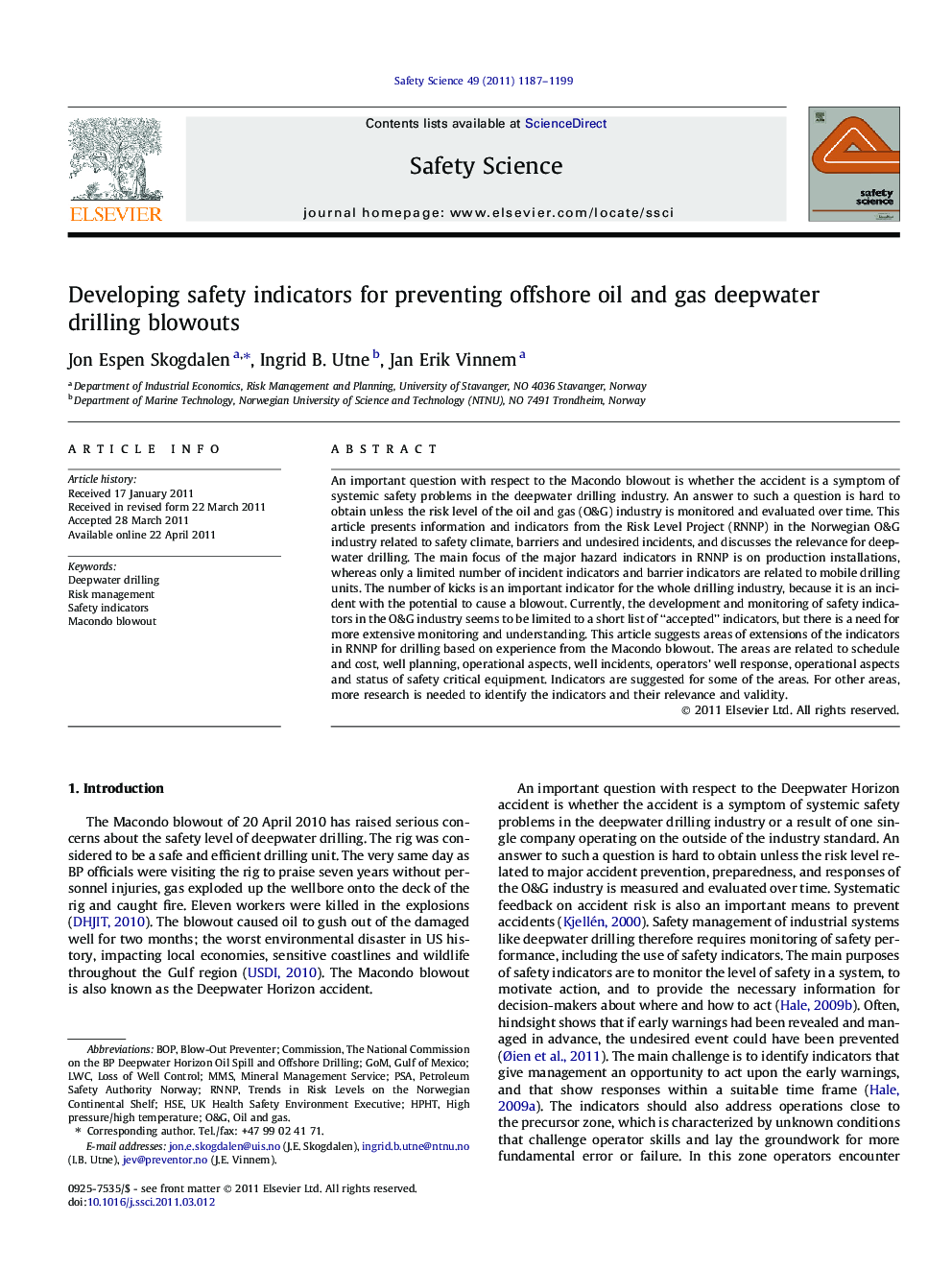| Article ID | Journal | Published Year | Pages | File Type |
|---|---|---|---|---|
| 589870 | Safety Science | 2011 | 13 Pages |
An important question with respect to the Macondo blowout is whether the accident is a symptom of systemic safety problems in the deepwater drilling industry. An answer to such a question is hard to obtain unless the risk level of the oil and gas (O&G) industry is monitored and evaluated over time. This article presents information and indicators from the Risk Level Project (RNNP) in the Norwegian O&G industry related to safety climate, barriers and undesired incidents, and discusses the relevance for deepwater drilling. The main focus of the major hazard indicators in RNNP is on production installations, whereas only a limited number of incident indicators and barrier indicators are related to mobile drilling units. The number of kicks is an important indicator for the whole drilling industry, because it is an incident with the potential to cause a blowout. Currently, the development and monitoring of safety indicators in the O&G industry seems to be limited to a short list of “accepted” indicators, but there is a need for more extensive monitoring and understanding. This article suggests areas of extensions of the indicators in RNNP for drilling based on experience from the Macondo blowout. The areas are related to schedule and cost, well planning, operational aspects, well incidents, operators’ well response, operational aspects and status of safety critical equipment. Indicators are suggested for some of the areas. For other areas, more research is needed to identify the indicators and their relevance and validity.
► The number of kicks is an important indicator. ► The use of safety indicators is limited to a short list of “accepted” indicators. ► There is a need for a more extensive monitoring and understanding of indicators. ► Safety indicators contribute to preventing systemic accidents. ► Safety indicators should be developed for all drilling phases.
